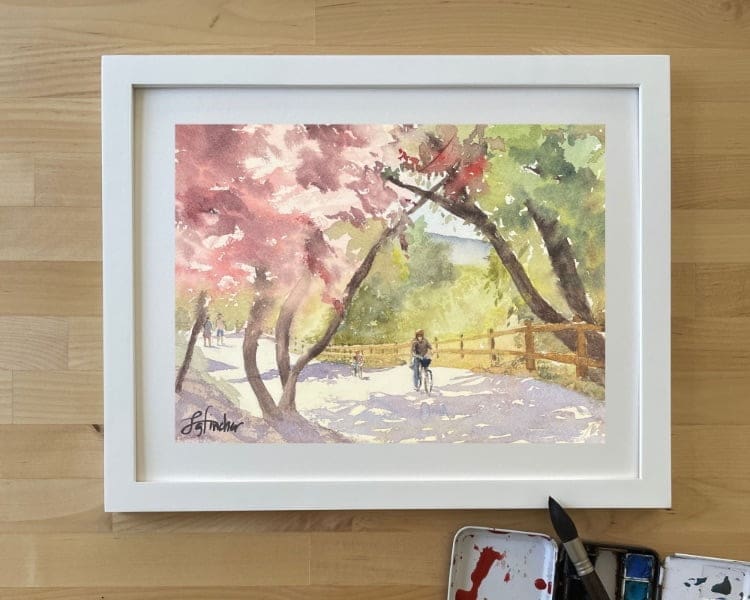We all want to find a rhythm of friendship that is enjoyable and a little bit challenging. Most of us don’t want friendships to be boring or humdrum. But like in tennis, we don’t want a partner who slams aces so hard we cannot return the ball.
We both need to adjust to the rhythm of each friendship. Depending on the friend, we may play faster or slower than usual. Often in a friendship, we will realize our friend isn’t able to match our volley. This isn’t just about speed. Sometimes I’ll bring up a topic or express a strength that isn’t familiar to them. This could feel like I’m sending a basketball over the net, when we’re playing tennis. Good friends will be able to notice, talk about it and adjust. Sometimes we’ll switch to basketball, sometimes we’ll stay with tennis. This adjustment is necessary for all friendships. I’ve written before how friendship requires both friends to adjust to a new pace (Walk with Me). And last week, I explained how friendship is best when both parties return the volley (Return the Volley).
To have a growing friendship you will need to use these tools of pacing and volleying to build an established rhythm. Without a steady rhythm you both have created, you cannot properly grow. This rhythm becomes a platform upon which you build your friendship. Without the platform, a single bump can upset the entire relationship. This often happens in marriage when kids come along, the rhythm gets jolted and marriages without practice in volleying can fall apart. John Gottman calls this “bids“. I prefer volleying because it highlights how important the mutuality is.
Here are two easy ways to develop a friendship rhythm.
- Notice what your friend is comfortable sharing.
- Match their content, speed, and length of return. For instance, if they write short texts, don’t send them eight paragraphs of text. If they prefer phone calls, try to work a phone call in this month. If they ask to meet you in person, meet them in person. If they often introduce politics and you cannot stand politics, you’ll both need to shift.
If you’re both working on your rhythm this works well, but if you’re the only one, you’re in trouble. In a good friendship you cannot be the only one adjusting your pace. Because this isn’t actually friendship, it’s a fan club, or maybe mentoring. But in a true friendship between equals, both parties must adjust their pace.
There’s another aspect of adjustment that bears noticing. You cannot adjust to an unhealthy rhythm and think you now have a great friendship. If their rhythm is sporadic, unfaithful and drama-filled and you match it, you’ll just create a friendship with poor rhythm. A good friend must bring a stable rhythm, too. And like I shared before, it can be fast or slow, intense or laid-back. But to have a friendship rhythm you must both bring the one essential ingredient: faithfulness.
I have two different friends who have developed different rhythms with me. Over the years, one is more like a train slowly gaining speed, the other more like a rollercoaster. I’ll call them Sam and Molly (not their real names).
Sam is the train, he’s been a friend who writes or calls maybe once a year, if that. But we’ve stayed friends because he always volleys a response. He’s timely and faithful. He never lets a question or request go more than a week without responding. I should add that I’m friends with Sam’s wife and Sam is close with my husband, too.
Over the years that volley has increased to once or twice every season. We’ve been friends for 22 years and now we volley a text maybe once a month. But because of the faithfulness between us, he or I could be silent for months, we’d still be good friends. But when we do reach out, we are there for each other. Like a train, Sam stays on the tracks and I know he reaches his destination, sure and steady. He’s trustworthy to be available, even if it’s spread out over time. I believe I’ve adjusted my pacing, too. And I’m a faithful friend to him.
Molly is another matter. Molly’s friendship is sort of like stepping on a rollercoaster, you don’t know where you’re going, but you know it’s going to be a rip-roaring time. Molly is incredible at connecting when it’s convenient for her schedule and something she’s excited about. But you must choose a topic, a pace, and a time that works for her. And once something more exciting appears, she sort of flits away. Someone else more pressing or exciting holds her gaze.
After our times together, I can count on her disappearing. Things we talked about so intensely and excitedly don’t seem important right after we say goodbye. Then, months later, she’ll remember me and we’ll get something else on the calendar and suddenly I’m front and center in her life again. Sometimes we meet and she’ll repeat the same story she told me last time. Friendship with Molly is a lot like riding a thrills rollercoaster. She’s on a pair of rails and she’s got a destination: excitement and fun. But when we’re done hanging out, I’m not sure I went where I wanted. Molly is unhealthy in this area, she’s quick to pull away (psychologists call this “dismissive or anxious avoidant”). Trying to get close to Molly is sort of like getting close to someone with amnesia. You only have the present, you cannot build on the past, and you cannot hope for growth in the future.
Now, here’s what’s confusing. If you were to see Molly and me together on a lunch date, you’d assume we were very close. That’s because of Molly’s intensity. But in this roller coaster friendship, I don’t have a true volley of conversation, curiosity and care. I only have this one lunch, and maybe not another one for a year. This isn’t due to living far apart or lack of trying. I’ve been friends with Molly for over 10 years. I’ve tried to match Molly’s rhythm, but I was the only one adjusting my pace. This means what I thought was a friendship is actually more a fan club. Molly is the star and I’m her groupie.
Molly’s sin (sin just means missing the mark) is false advertising. She appears full of friendship, but she cannot keep a steady rhythm. She’s easily distractible, “so busy” (read about that excuse here), and cannot remember to keep up steadily with any of her friends. Molly doesn’t adjust for any friends. Even her spouse must match Molly to spend time with her. She expects others to fit into her rollercoaster, thrill-seeking life. But, in the name of fun and busyness, Molly has lost intimacy.
In friendships, if we want closeness, we must both adjust our rhythm. Some people will never be capable of giving more than a thrill ride. And when you finish the ride exactly where you started, you should start to wonder: What’s the point of this friendship?
As we age, we need more friends like trains than rollercoasters.
When I figured out that Molly couldn’t sustain a volley, I sorted her further back from my heart. You can learn how to do that in Sorting Friends and Downsizing a Friendship. It was definitely painful and took time, but this process gives me more time to enjoy the Sam friendships in my life. If you can do this work, you will build a rhythm with the golden friends that will sustain your friendship for years to come.
The Friendship Posts
Expecting Better Friendships: Friendship Fountain, Sorting Friendships, Downsizing Friendships
What is a Friend: Balloon Friends, Companions, It is Good You Exist
The Pace of Friendship: Walk with Me, Return the Volley, Trains and Rollercoasters
Growing Friendships: Friends and Flowers, Growing a Friendship, Weeding a Friendship
Healing a Friendship: Forgiveness, The Work of Healing, The Crucial Question




